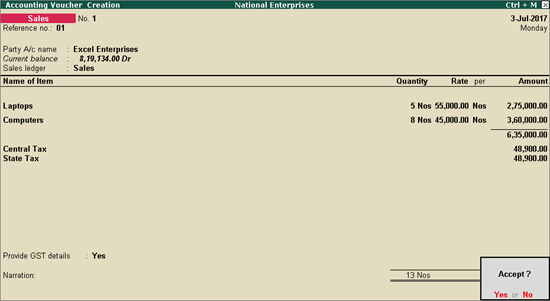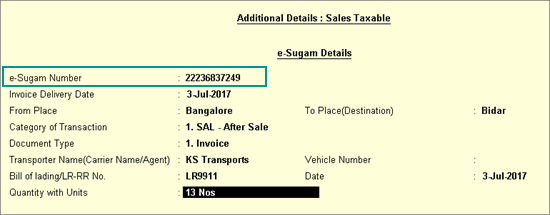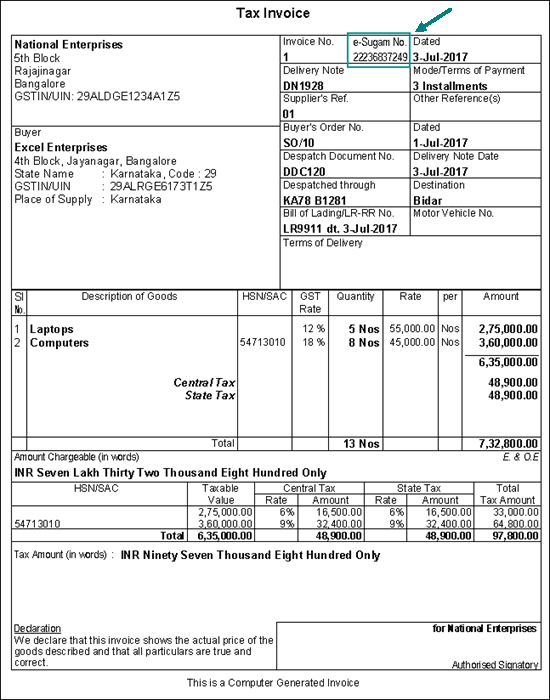
The e-Sugam feature under GST is provided for Karnataka. When you obtain the e-Sugam number for a transaction, you can enter it in the invoice or in the e-Sugam report. The e-Sugam number can also be printed in the invoice.
1. Go to Gateway of Tally > Accounting Vouchers > F8: Sales.

2. In Party A/c name, select the customer ledger or the cash ledger.
3. Select the sales ledger.
4. Select the required items, and specify the quantities and rates.
5. Select the central and state tax ledgers.
6. Set the option Provide GST details to Yes. In the GST Provide Details screen, enter the transport details.
7. Save the invoice.
Once you obtain the e-Sugam number, enter the same in the e-Sugam report, or in the field e-Sugam Number of Statutory Details screen of the invoice (displayed on enabling the option Provide GST details) as shown below:

8. Press Ctrl+A to save e-Sugam Details.
9. Press Ctrl+A to save the invoice.
10. Press Alt+P to print the invoice. The e-Sugam number appears as shown below:

Note: Ensure the option Print E-sugam No.? is set to Yes in the Invoice Print Configuration screen.
To view the vouchers having e-Sugam details
1. Go to Gateway of Tally > Display > Statutory Reports > GST > e-Sugam.
2. Select the period using F2: Period.
3. Select the required voucher, and click S: Set e-Sugam No to enter the e-Sugam number.

4. Press Enter to save.
Click F12: Configure in e-Sugam Vouchers report.
● Set the option Show tax types in separate columns? to Yes to view the breakup of taxes and cess.
● As per e-Sugam rules, sales transactions of Rs. 50,000 and above are displayed in the e-Sugam Vouchers report. To capture transactions of values below Rs. 50,000, click F12: Configure and set the transaction limit.

Based on the transaction limit set in the Configuration screen, the sales transactions will appear in the e-Sugam Vouchers report.